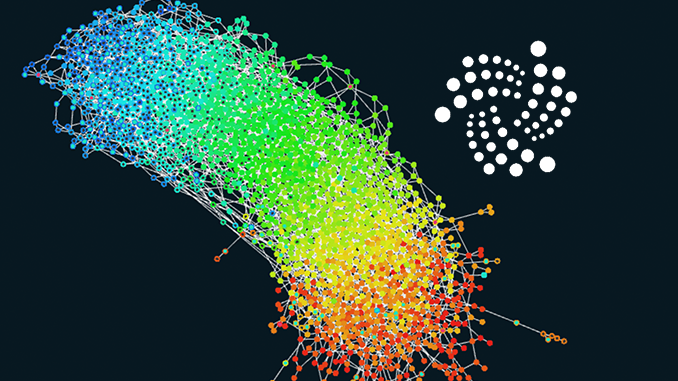
In the discussion about a decentralized network at IOTA, developer Hans Moog sees a great opportunity: With “collaborative consensus” instead of the established protocols PoW and PoS, the block chain of IOTA could become more secure and better. But not everyone likes this idea.
In 2021, IOTA 2.0, under the project name Coordicide, is to move away from the central coordinator and put IOTA, like almost all other crypto projects, on a decentralized basis. A first test network called Pollen is already in operation. Now, IOTA developer Hans Moog is giving an insight into technological considerations for IOTA 2.0 on Twitter. He promises that the “collaborative consensus” approach as a method for validating transactions will yield significantly better results than proof-of-work (PoW) or proof-of-stake (PoS).
PoW and PoS versus IOTA
Bitcoin (BTC) and Ethereum (ETH) as the two leading crypto currencies rely on PoW as the protocol used to verify transactions on the network before they are committed to a new block. With PoS, an innovation is on the rise that makes block chains faster and involves more network participants. But Moog sees these two solutions as a waste of resources and the danger of unwanted centralization. With PoW, basically only specialized computers can now provide the solution to cryptographic puzzles – not an option for IOTA anyway, since the network is also supposed to be open to less powerful end devices in the Internet of Things (IoT). Moog also points out that in the case of Bitcoin, a dozen or so mining pools would have taken control of the block chain in reality.
PoS is not much better with Moog. Since the trend in PoS is toward page chains, network participants would have to distribute their capacities over many block chains to keep them stable. In addition, a lot of time is wasted by processing transactions from many nodes simultaneously. IOTA could break new ground with the “collaborative consensus”. Selected network participants are to create a quick consensus on which transactions are to be released. For example, an imitation of “cellular automata” is under discussion for IOTA to solve validation in a new way.
Almost provocatively, Moog asks who should be trusted more: a global group of economic players from areas such as industry, foundations and states? Or an accumulation of anonymous, rich crypto investors? What he means by this is that the “collaborative consensus” of well-known and proven network participants provides more security than the solutions used so far. IOTA traditionally sees itself well connected to large industry through pilot projects.
But Moog also touches the basic principle of Bitcoin and Co. with his remarks: The appeal that many crypto-currencies find is closely related to the fact that there should be no possibility of influence by banks, monetary policy or even legal systems. With Moog’s proposal of privileged network participants this is led ad absurdum. The response to his vision of IOTA is divided, with approval and criticism roughly in balance.
Conclusion: IOTA revives the question about new models of blockchains
Moog has succeeded in generating attention for critical future issues at IOTA. It may also have been a test balloon for whether IOTA could find an interim solution from the previous coordinator and complete decentralization – because that is “collaborative consensus” as Moog interprets it. One thing is clear: With Coordicide aka IOTA 2.0, the final word on the technological design has not yet been spoken. Incidentally, there is already a project, for example, Hedera Hashgraph (HBAR), which is not far from “collaborative consensus” – because there, the validating nodes are operated exclusively by large companies.
Best place to buy Bitcoin or IOTA:

Leave a Reply